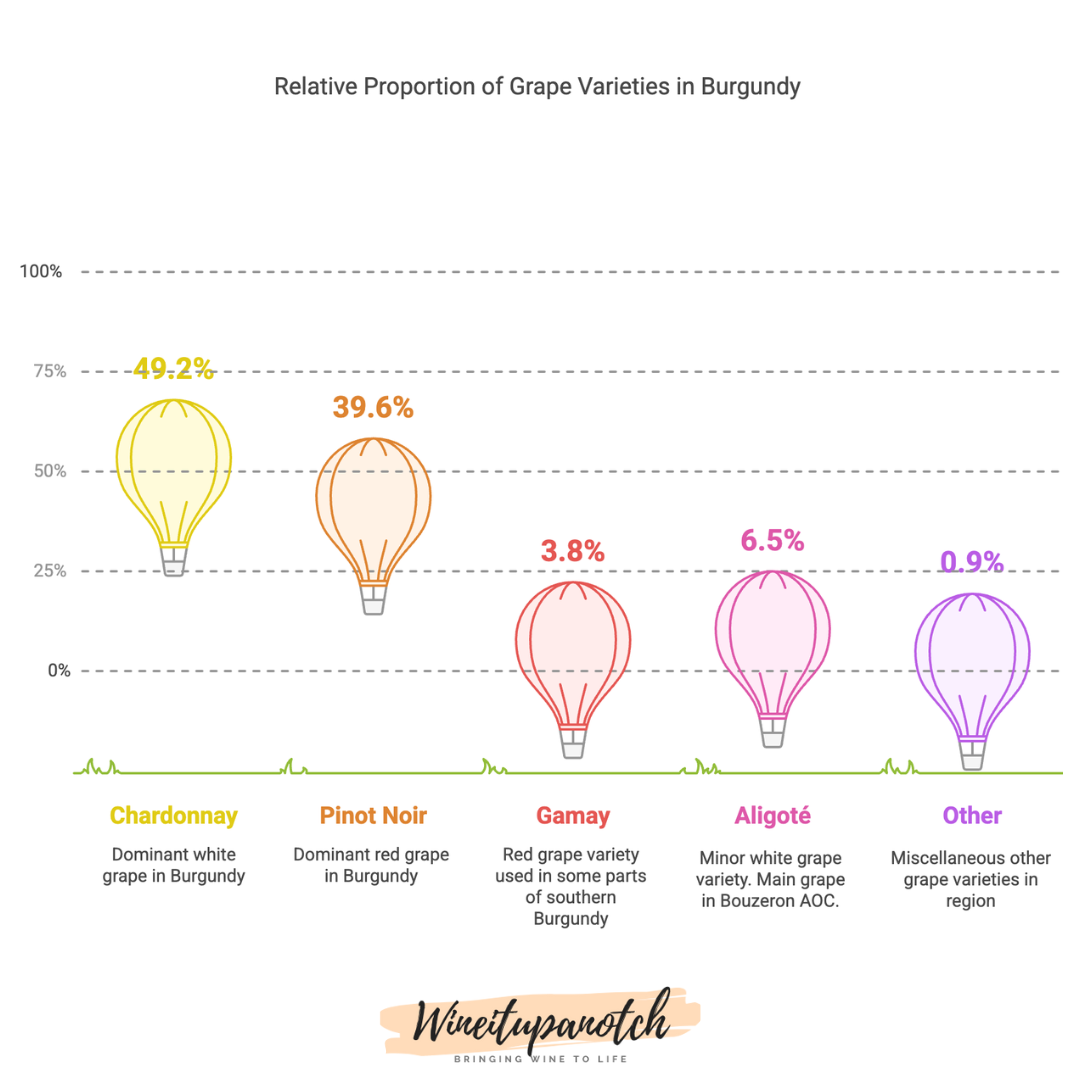UNDERSTANDING THE WINE GRAPES OF BURGUNDY, FRANCE
Welcome to our “Diving Into Burgundy” series, where our goal is to help you better understand the wines of the one of the most coveted regions in the whole world - Burgundy.
While the Burgundy wine region is undoubtedly one of the most (if not the most) complex wine regions in the world, the wine grapes of Burgundy are not complex at all.
In fact, it couldn’t be much simpler! We kid you not.
So save all of your heartache and confusion for other aspects of Burgundy, wine lovers - because you’re about to master the grapes of this region in record time. Keep on reading.
THE LOWDOWN ON THE GRAPES OF BURGUNDY
Two Rules Worth Remembering
RULE #1: THE RULE OF FOUR
Whenever you encounter a wine from Burgundy, always remember this very simple rule:
Most red wines of Burgundy are made from Pinot Noir while the white wines of Burgundy are always made from Chardonnay. There are also much smaller amounts of wines made from Gamay and Aligoté.
This is true in 99.99% of all cases. Seriously. It’s that straightforward. There are really only four grapes that matter in Burgundy!
RULE #2: ONE, NOT MANY
Here’s another rule worth remembering when it comes to the wine grapes and the wines of Burgundy:
The vast majority of wines from Burgundy are single varietal expressions, i.e. they are made from one grape only. Blending grape varieties is not a key aspect of winemaking in Burgundy.
In fact, an overwhelming majority of Burgundy wines are made from Pinot Noir (red wines) or Chardonnay (white), with no other grape in the blend. In other words, the majority of wines from Burgundy are made from either 100% Pinot Noir or 100% Chardonnay. This is also true of the wines that are made from Gamay and Aligoté.
The Breakdown of Grapes in the Vineyards
The wine region of Burgundy provides ideal weather conditions and terroir for the cultivation of Pinot Noir and Chardonnay. Accordingly, these two grapes make up over 85% of all of the vines that are planted in the region.
The exact breakdown of grapes planted in the vineyard is:
Chardonnay - 49.2%
Pinot Noir - 39.6%
Gamay - 3.8%
Aligoté - 6.5%
Others (Sauvignon, César, Pinot Beurot, Sacy, Melon, and a few other minor grapes) - 0.9%
NOTE: Sauvignon is the most prominent grape in the “other” category
GRAPE PROFILES IN BURGUNDY
Chardonnay and Pinot Noir are the undoubted rulers of Burgundy. Both grapes have found their spiritual homes in Burgundy and Burgundy is considered a benchmark region for both varietals, meaning that the rest of the world considers the expressions of these two grapes in Burgundy to be worth trying to attain. Cuttings of these two grape varieties have been propagated across the world in an attempt to find the same delicacy and expression that is found in Burgundy.
It has to be said that there is no one single expression of either Chardonnay or Pinot Noir in Burgundy - the expression of these grapes varies based on terroir and winemaker, and further, from year to year.
However, it can also be said that generally speaking, expressions of both Chardonnay and Pinot Noir tend to be elegant and restrained, often with a good amount of oak usage, and more herbal than overtly fruity. Often, these wines can age for very long periods of time and they often improve with age. As you go further south in Burgundy, say towards the Cote Chalonnaise or the Maconnais, the fruit expresses more fruity notes due to warmer conditions and different soils.
When it comes to Gamay, Gamay was the OG red grape variety of the region. But alas, it is no longer. It does not fare quite as well as Pinot Noir in this area and therefore lost its ground. When used today, it gives off wines that tend to be a bit fruitier and less silky and elegant than Pinot Noir from the region…..though these wines can still be incredibly delicious. They are often also quite well priced for Burgundy.
Finally, Aligoté is a grape that was almost forgotten but is experiencing a renaissance of sorts, with plantings increasing in recent times. Wines made from Aligoté tend to have very high acidity and orchard fruit notes such as green apple, lemon and pear. They can be more simple and lean than the wines in the region that are made from Chardonnay. However, they can also often be a lot more budget-friendly!
AND THAT’S A WRAP!
This should give you all that you need to know to feel a bit more confident about the general composition of the wines of Burgundy, fellow wine lovers! See - we said it was pretty straightforward…..weren’t we right?
At least this one thing about Burgundy wines is easy to grasp! ;-)
In our next article in our “Diving Into Burgundy” series, we will explore the different wine styles of the Burgundy region. Stay tuned!




